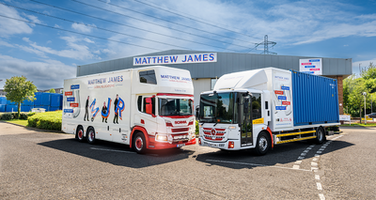
There are an endless number of articles and blog posts online that give advice on saving money when moving home. Some offer sensible, practical advice, others not so much. For example, decluttering is a good thing, but putting everything in black bags instead of boxes is ridiculous.
Much of the aforementioned advice is for people who have decided to move themselves, rather than getting a removals company to do it. So, we are going to look at the pitfalls of do-it-yourself moving.
Firstly, there is a good reason that so many removals businesses exist. Moving the entire contents of a house is not just physical labour, it requires a few skills that are not immediately apparent. Knowing how to properly pack, wrap and protect household goods is just one area that benefits from training and experience. There is also knowing how to load a van for weight distribution and observing the legal restrictions on vehicle weight. Professional removers also have all the furniture protection equipment and materials that you won’t find at a van hire company.
Here are the top reasons why doing it yourself can be false economy.
Vehicle and equipment
The average person has little to no experience of calculating the volume of their entire household possessions, so has no starting point to decide the size of the vehicle they will need. This often leads to overloading (which can have legal penalties) or being forced to make more than one trip.
Multiple trips may be fine, (if your hired help is up to the task) but can create problems if you are on a tight schedule. More often than not, movers are expected to have vacated their former property by early afternoon, so the new owner/occupier can move in. If the new owner is left waiting to move in, they will have their removals team on stop, which could mean extra costs to them. They may pursue you for those costs.
Also consider the lack of protective equipment. Van Hire companies sometimes provide blankets to protect your goods as you load them but are highly unlikely to supply protective furniture covers or instruction on how to properly fit them. Without proper protection, some of your most expensive furniture is at risk of damage in transit or while loading and unloading.
Cost of Resources
Apart from the cost of hiring a van and the fuel used, the main expenses are packing materials and labour. Packing materials are usually much cheaper when purchased from a removals company that is hired to move you. So, without access to those cheaper prices you will need to buy sturdy boxes from a more expensive supplier.
Free boxes from supermarkets, (for example) are not good enough for moving home. Read more…
When considering labour to help with a D.I.Y. move, most people have a few family members and friends they can call upon. Surprisingly, most of them “would love to help” but are “busy that day”, (often before you tell them what day you need them). Most people realise that nothing is truly free. “Free” labour may cost financially in Thank You gifts or may burden you with an expected reciprocation further down the line.
Insurance and Consumer Protection
It may be that your Home Contents insurance will cover your goods while they are being moved, but that is unlikely. Doing the house move yourself will therefore mean your goods are uninsured. Also, if your hired (or “free”) help doesn’t turn up, or you have problems with the van, there is nobody to turn to for compensation.
Professional movers offer specialist insurance to cover your goods during a move and AIM members have complaints procedures including Alternative Dispute Resolution through the Furniture and Home Improvement Ombudsman.
It may seem that hiring a van and doing your own house move is the cheaper option, but, all things considered, it could cost you much more than hiring a professional removal company.




